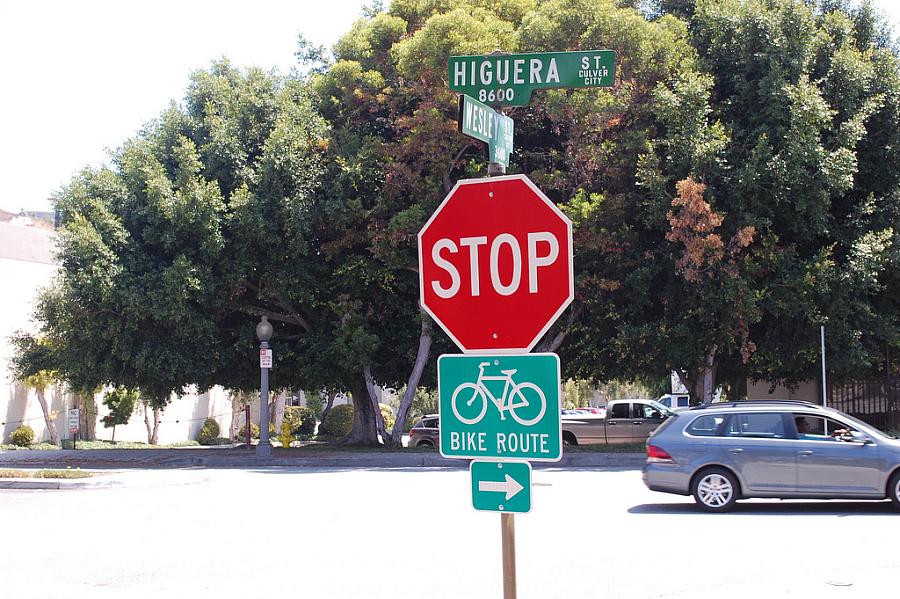Studying the Link Between Transportation, Planning and Public Health

As part of a USC Annenberg School of Journalism "public health mini-fellowship" for online writers, I studied the five communities that received Policies for Livable and Active Communities and Environments (PLACE) Grants from the L.A. County Department of Public Health in 2008. Each of the five communities, Culver City, El Monte, Glendale, Long Beach and Pacoima, received $330,000 to create a new document that would become part of the local general plan and create a pilot program demonstrating what their plan hopes to accomplish.
The grants funding expired on June 30, 2011. The series ran on Streetsblog in August, September and October. A complete list of all the stories, with links, and videos from each of the five PLACE Coordinators who oversaw the local grants, can be found by clicking here. Throghout the process, I learned a lot about each community. As the fellowhsip process advanced, I also learned a lot about journalism and what makes a truly succesful journalist.
At the first meeting of my fellow fellows, we were asked a simple question, "do you consider yourself a journalist." My answer at the time was, "no." I considered myself an activist who uses journalism to advance his cause. My answer was apparently thought provoking enough that the Fellowship decided to film it. My answer today would be different than it was last spring. I am a journalist. Streetsblog is a journalistic publication. We may be a publication with a bias, one we wear proudly, but that doesn't stop our team of contributors from being journalists.
Nothing I said in the video about how the goal of Streetsblog is to create change and move the conversation about transportation policy past the current "car-centric" has changed. What has changed is my perception of what a journalist is. I had spent too much time seeing reporters at major publications listen to both sides of an issue, slap the statements of politicians together, declare a piece "balanced" and publish it. I had assumed that this is what journalism was about, providing balance. Now I know that this particualr practice is bad journalism. When the quest for truth becomes secondary to the need for balance, then something is wrong.
A second thing that changed my mind was meeting Isabelle Walker. Walker, one of the fellow fellows, is the founder of "Homeless in Santa Barbara," a website with a name that doesn't leave a lot to the imagination. No, Walker isn't homeless, but through using the tools of a journalist, she brings the plight of Santa Barbara's homeless to life for her readers. Walker is a journalist, and would probably be shocked if someone suggested otherwise. She also has a point to make about the issues and conditions facing many of Santa Barbara's homeless people.
Sure, the Fellowship taught me new tools to improve L.A. Streetsblog, which is one reason for the 25% increase in readers we've seen the last several months. Beyond how to create a data map, and how to improve our twitter feed, the knowledge of what journalism really is and Streetsblog's role beyond an advocacy website was the most useful lesson I could learn.
From a public health standpoint, I was surprised how anxious people are to combat obesity through a more active lifestyle but how stymied they feel by the governments that are supposed to be representing their best interests. When the government transitions from roadblock to ally, even the smallest investment has major dividends.
The most dramatic changes that have already happened, happened in Long Beach. When the city embarked on its quest to become the most bike friendly city in America, it began painting not just bike lanes, but green shared lanes, separated bike lanes and bike boulevards. The results are mostly anecdotal, but on the one route where they have good "before and after" data, bike ridership doubled in the first year after the new paint went down. Anotehr good indicator of the embrace of two-wheeled people powered transportation is the mini-boom in bike related businesses.
We discovered smaller versions of this success everywhere. In Glendale, the city staff didn't believe there was a demand for bicycling. Three years later, they have a mayor that bikes to her city hall office. In Pacoima, a decrepeit scary looking bridge was all that connected one part of the community to the local high school. Some new paint, bollards and plants have spruced up the bridge and now hundreds of students walk across it every day. In El Monte, a walking club and bicycle special events have hundreds of people exercising outdoor, in some cases for the first time in decades. And in Culver City, a bicycle club actually formed as a result of the public meetings. Once people met each other, they started to bike together.
The plans I studied as part of the Fellowship were impressive, but they're just paper without a) implementation and funding and b) public will to use the new and improved facilities.
The people are ready, not just in these five communities in L.A. County, we just need the leadership to show them that its safe to walk, bike and take transit. In fact, given the public health benefits, these should be the preferred ways to get around.

